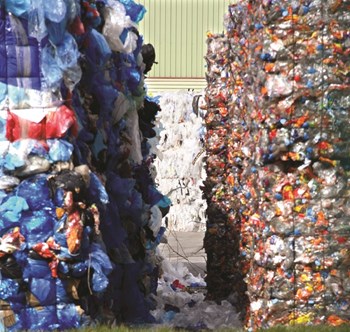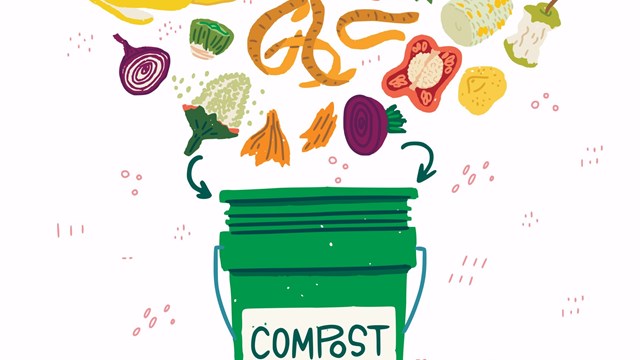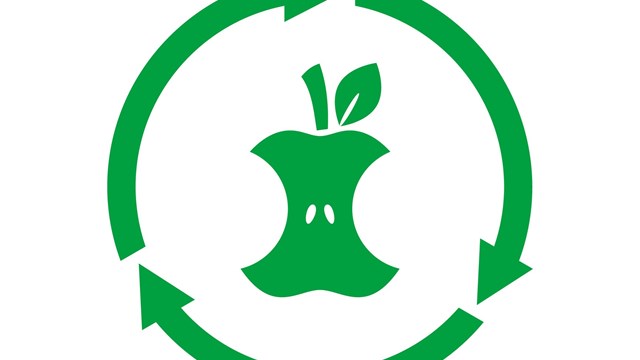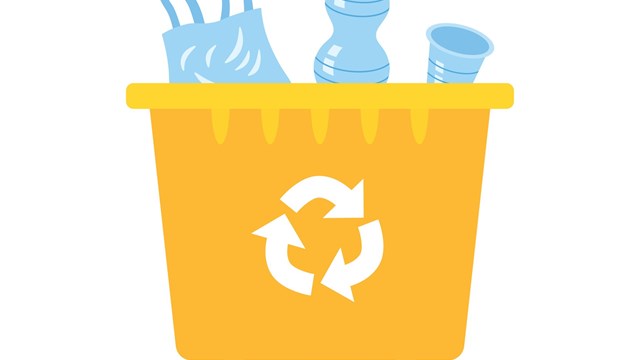
We as a culture produce a lot of trash—and not just in the form of reality television shows, late night infomercials, and bad romance novels. Whether it’s the candy wrappers we toss into the trash bins outside on the sidewalk, the newspapers we take downstairs to the recycle bin, or half-eaten food we throw down the convector chute, we dispose of tons of trash annually. But where does it go from there? Put another way: how does a city of nine million people take out its trash?
Most of us don’t think twice about what happens to our garbage after we dispose of it. Sure, some of us might be a little annoyed if our building institutes a more rigorous recycling program and we now have to split our bottles and cans into four bins instead of just two, or we might be a little put out by that rumbling garbage truck at the crack of dawn, or worry about what to do with our old, no-longer-usable, printers, computers and cell phones. But that's probably the extent of our consideration.
“Mayor Michael R. Bloomberg’s PlaNYC 2030 initiative—with its focus on six of the principal areas affecting green building, namely land use, water, transportation, air quality, energy efficiency and climate change—has certainly become one of the nation’s model sustainability plans,” says Attorney Peter Zlotnick, a partner with the Manhattan law firm of Kagan Lubic Lepper Finkelstein & Gold, LLP who specializes in green building practices and litigation. “It does not focus on residential recycling and waste management. With the closing of Fresh Kills landfill, the city faces an enormous financial, political and environmental crisis with few—if any—ready solutions.”
So the question remains: What happens to the garbage after it leaves our homes or our offices? Well, by all accounts, the New York City Department of Sanitation (DSNY) is the first link in the chain. It's a huge municipal government enterprise, and has a huge task ahead of it.
According to information provided by DSNY spokesperson Kathy Dawkins, the department collects more than 10,500 tons of refuse and 1,760 tons of recyclables a day. It has more than 7,000 uniformed workers and supervisors, 2,340 collection trucks, 450 street sweepers, 2398 front-end loaders, 465 salt/sand spreaders (remember the blizzard of 2005) and more.
And that doesn’t even take into account the city’s private carters. According to Nancy Walby, co-chair of the Brooklyn Solid Waste Advisory Board (SWAB), while the city provides garbage pickup for residences, multifamily buildings can supplement that with private carting services if they feel they need it.
Processing, Processing
The DSNY uses many waste-processing facilities for recyclable trash. Each one is different—some, like Pratt Industries' paper facility in Staten Island, recycle paper products; while others, like the Sims Metal Management processing plant in Sunset Park, Brooklyn, specialize in recycling metal products.
What happens to garbage that can’t be recycled? In the past, it was usually trucked or barged to landfills, such as the now-inactive Fresh Kills Landfill on Staten Island. And many New York City residents certainly remember when almost every large apartment building had an incinerator—a situation that came to an end in the late 1980s, when recycling was introduced and incinerators were banned.
But increasingly, garbage is being exported from the city, whether by rail, truck, or even by barge. Indeed, Mayor Bloomberg’s 2006 Solid Waste Management Plan relies heavily on waste-transfer stations, especially marine-transfer stations, as the ones transferring trash onto barges are known. And regardless, whether they’re old-fashioned incinerators and landfills or new-fashioned waste transfer stations and recycling plants, wherever waste transfer stations are proposed, controversy often follows. This takes place even when older facilities are slated to be replaced with more modern ones. For example, after the city closed the heavily-polluting Southwest Brooklyn Municipal Incinerator, it proposed a waste transfer station at the same waterfront location on Gravesend Bay.
As part of Bloomberg's plan, according to material provided by DSNY’s Dawkins, the city proposed four new marine-transfer stations at sites that previously housed similar facilities: Hamilton Avenue in Red Hook; Southwest Brooklyn; College Point in Queens, and East 91st Street in Yorkville, Manhattan.
As one might imagine, the Manhattan proposal has especially engendered strong opposition from local officials and civic groups, in both the regulatory and legal arenas. But all of them have had to go through a Byzantine array of staff reviews, reviews by administrative law judges, legislative hearings, environmental studies and more. So far, says Dawkins, none have yet been built—but the Queens and Hamilton Avenue facilities are slated to be completed in 2012, while the other two facilities are still awaiting permits.
As part of the same plan, the city has also implemented contracts with private firms for rail export of trash from freight rail facilities in the South Bronx, northern Staten Island and Bushwick, Brooklyn. This arrangement is up and running. As Dawkins says, “The Staten Island Transfer Station, all of the Bronx and parts of Brooklyn’s refuse are being exported by rail.”
Inside Processing Facilities and
Transfer Stations
According to the Newtown Creek Alliance, the city owns or contracts with 58 waste-transfer facilities of various types.
What exactly goes on inside such plants? George McGrath, a spokesman for Waste Management Inc., one of the largest trash-processing firms in the U.S., takes us inside both recycling plants and waste transfer stations.
The company’s Harlem River yard transfer station in the Bronx, for example, receives residential waste from throughout the borough. DSNY trucks bring the refuse to the fully-enclosed plant, where it is tipped from the trucks and then placed into rail containers, which are then sealed.
Once the garbage leaves waste-transfer facilities, where does it go? If often ends up at private landfills in states like Ohio and Pennsylvania, landfills that, strange as it may seem, actually want to import more garbage.
Waste Management Inc. also operates recycling plants, also known as materials recovery facilities (MRFs). One such plant it operates in Newark accepts all types of recyclable materials, from paper and cardboard to glass and metal, says McGrath.
“Collection trucks deliver the materials in a single stream—that is, they do not need to be separated in advance. The materials run through a highly automated facility where they are separated into different types (fiber, plastic, metal, glass), compressed, packed and shipped out to plants that convert these materials into new paper produces, containers, etc.,” he says.
Inside Your Building
So far, we’ve talked about mega-sanitation facilities. What kind of trash-processing facilities are needed inside a busy condo or co-op building? Jesse Holland, president of Sunrise Management and Consulting in Albany and the former head of the Capital New York Chapter of the Institute of Real Estate Managers (IREM), says “Some have compactors, some have a packager that doesn’t really compact the waste but looks like a sausage tube and ties the end. There’s also a move to several companies doing concierge garbage. Instead of bringing it to a location in the building, such as the basement, residents leave it outside their doors, and the company picks it up and brings it to where it has to go.”
Many building complexes hire private carting companies to supplement municipal trash collection. Recently, the city has contacted the Federation of New York Housing Cooperatives & Condominiums (FNYHC) and the Council of New York Cooperatives & Condominiums (CNYC) to help them improve recycling collection efforts. The New York City Council is considering a bill that would curb poaching activities of recycled materials and regulate recycling pickups done by private carters. Proposed in June, Intro No. 889 would impose stiffer fines on those “poaching” or unlawfully taking recycled materials, and would require buildings to justify their usage of private carting services.
No matter what kind of facilities are inside a multifamily building, garbage trucks have to come around and pick the trash up—and as anyone who lives in a New York City condo or co-op can testify, these trucks make quite a bit of noise.
Truck traffic—and the noise, pollution and traffic problems that go along with it—is one of the main complaints that comes up almost every time a new plant is proposed.
“A lot of trucks have to wait in a queue to get into a facility,” said Walby of SWAB. “This produces emissions and ties up traffic. Hopefully, building more efficient facilities means more space for queuing trucks, better for logistics when the trucks come in.”
Of course, people also complain about the smell that emanates from these facilities. Recycling facilities, however, produce much less of a noxious impact than garbage plants, says Holland.
“A processing facility sited in an industrial area has much less impact you’re used to. They don’t have the same smell as garbage does. They’re more akin to a paper or cardboard processing plant,” he says.
Problems for Boards and Managers
Problems with the city’s waste-handling process also extend to the building level.
Angela Sung Pinsky, senior vice president for management services and government affairs for the Real Estate Board of New York (REBNY), says, “Often times, building owners [or, in the case of co-ops and condos, boards and managers] will be held responsible for appropriately separating recyclables and waste, but the window for pickups can be 12 hours.
“While the materials are on the street, people will dump garbage into those containers or will forage for recyclables, and the building could be issued violations for these actions.”
Additionally, she says, “In older buildings that have narrow hallways, it can be difficult to encourage recycling with bins on each floor, as the Fire and Buildings departments do not have clear guidance on where these can go without impeding on egress.”
Co-op and condo residents themselves are not blameless in regard to trash and garbage collection. Holland slams what he calls the “Somebody else will take care of it mentality.”
“This problem comes in where you have many people living in a group setting. They say, `That wasn’t my piece of garbage, and I’m not going to pick it up’,” says Holland.
A Trashy Future
Regardless of what problems garbage disposal causes nowadays, newer, better methods are on the horizon.
Holland says the future will see more “closed loop” systems for garbage trucks in which garbage will be processed to create methane gas, which the trucks, in turn will use as fuel. Waste Management Inc. currently has some trucks that run off of liquefied natural gas, a by-product of trash that is found in landfills.
The DSNY has a similar idea: This past March, it issued a request for proposals to build a facility to convert waste to clean energy. The facility would begin by processing 450 tons of garbage a day—less than one-twentieth of the 10,000 tons or trash a day generated within the city.
The proposal specifically bans a return to incineration—unfortunately, when some private operators talk about “waste-to-energy facilities,” they’re talking about incinerators.
For others, the future needn’t be so high-tech—merely more environmentally-friendly.
“What we would like to see,” says Walby, “is fewer [garbage] trucks on the highway. If a lot of this waste were barged out or shipped out using rail, it wouldn’t tie up the highways.”
We applaud such sentiments. Now, if they could only make garbage trucks that don’t make noise.
Raanan Geberer is a freelance writer and a frequent contributor to The Cooperator.






2 Comments
Leave a Comment